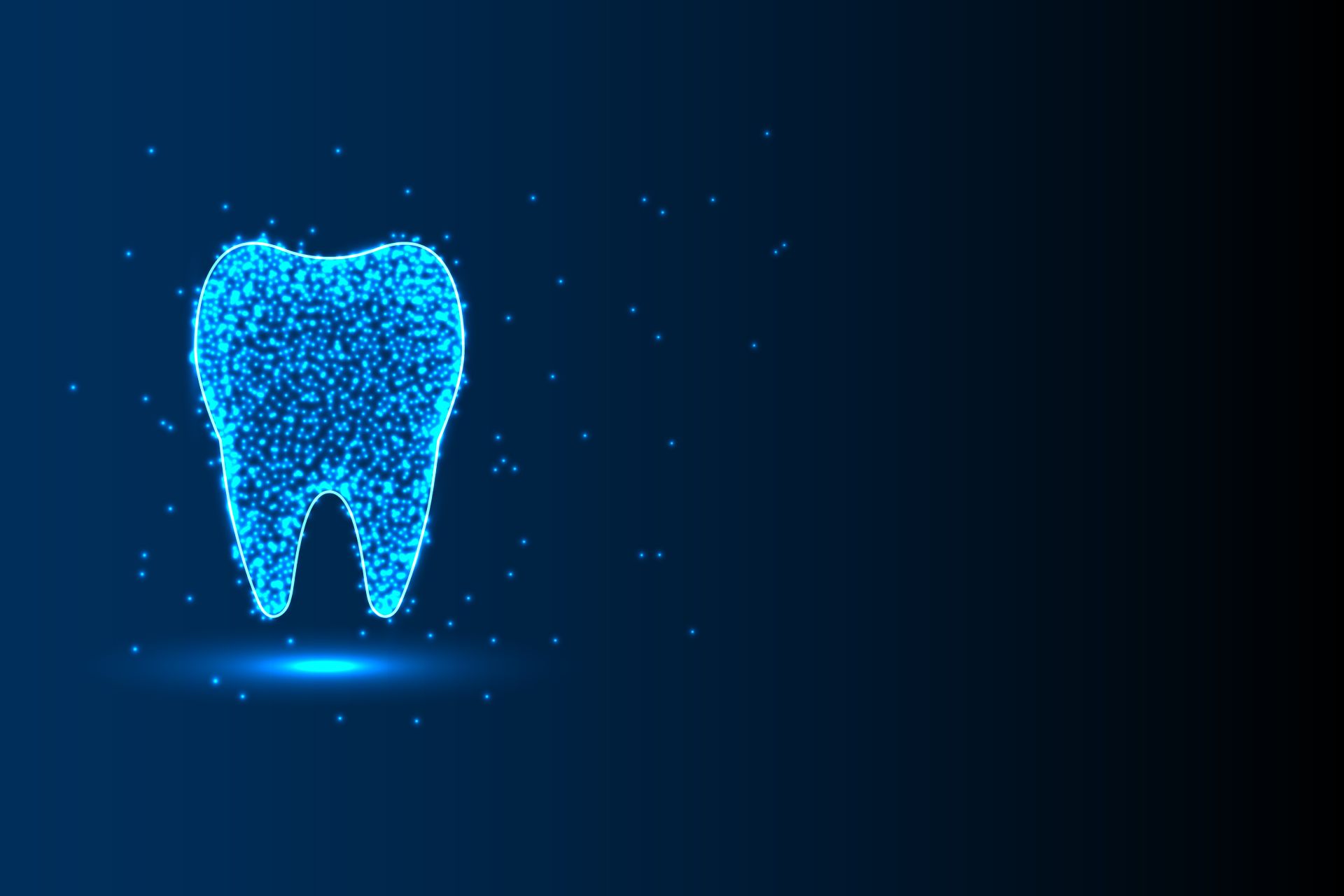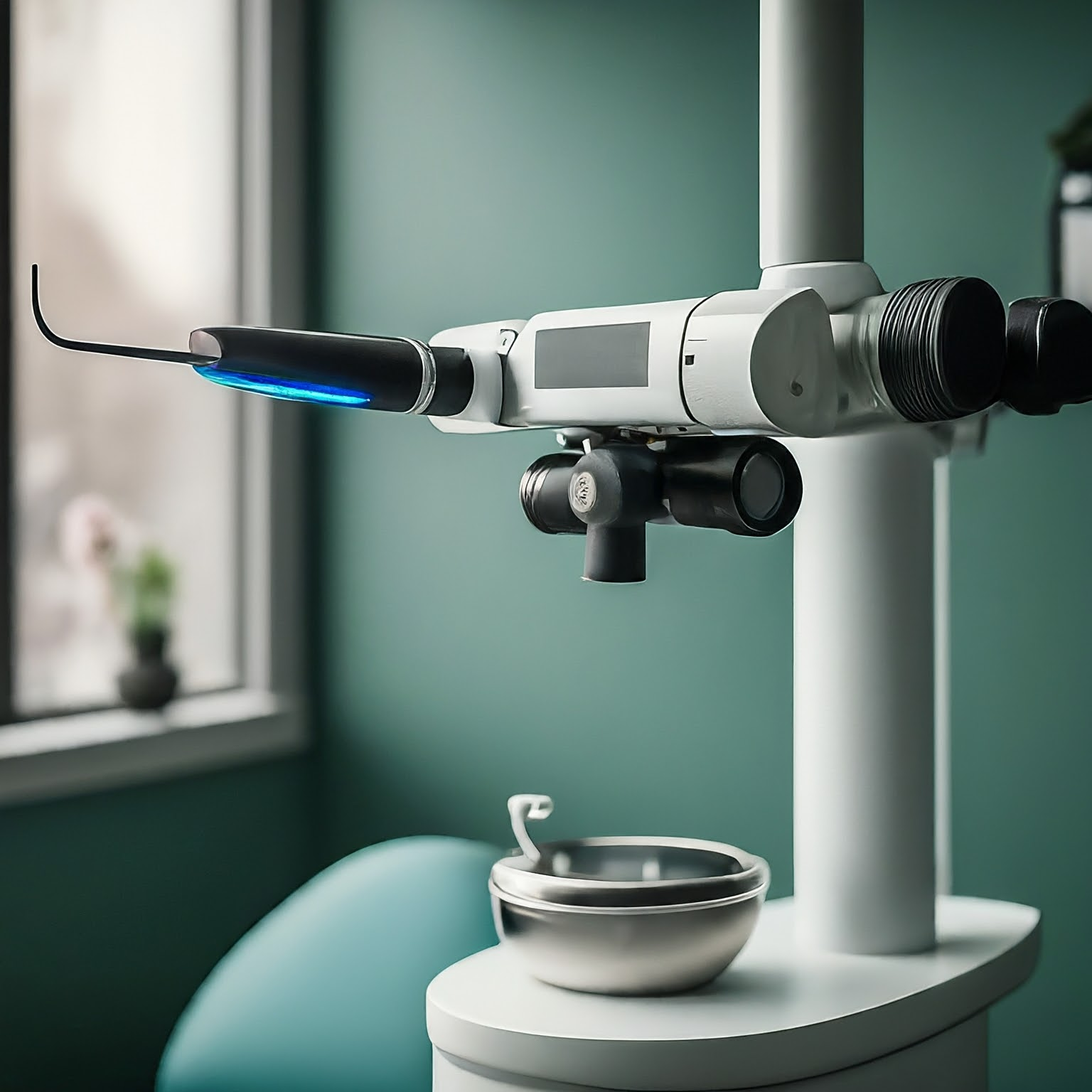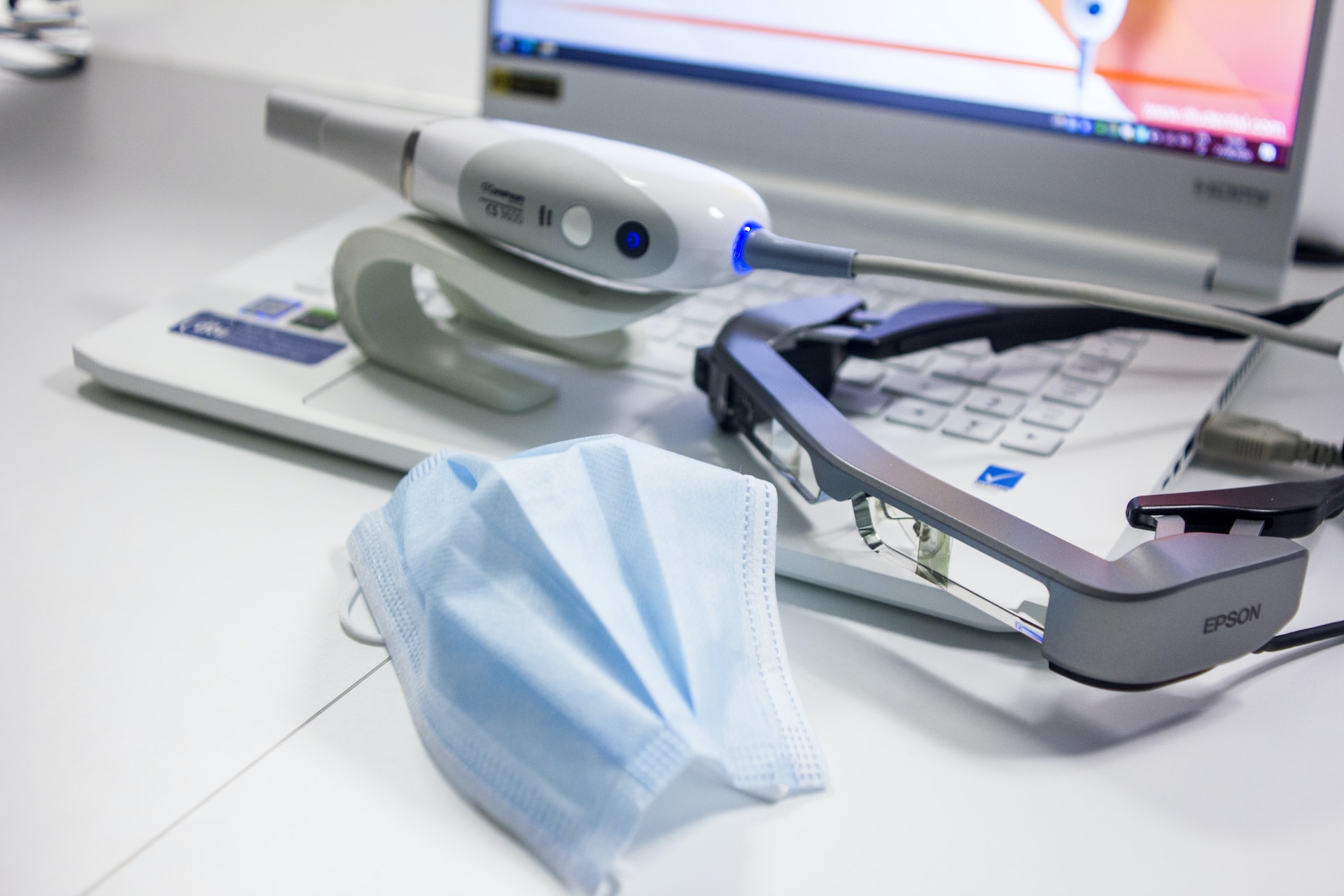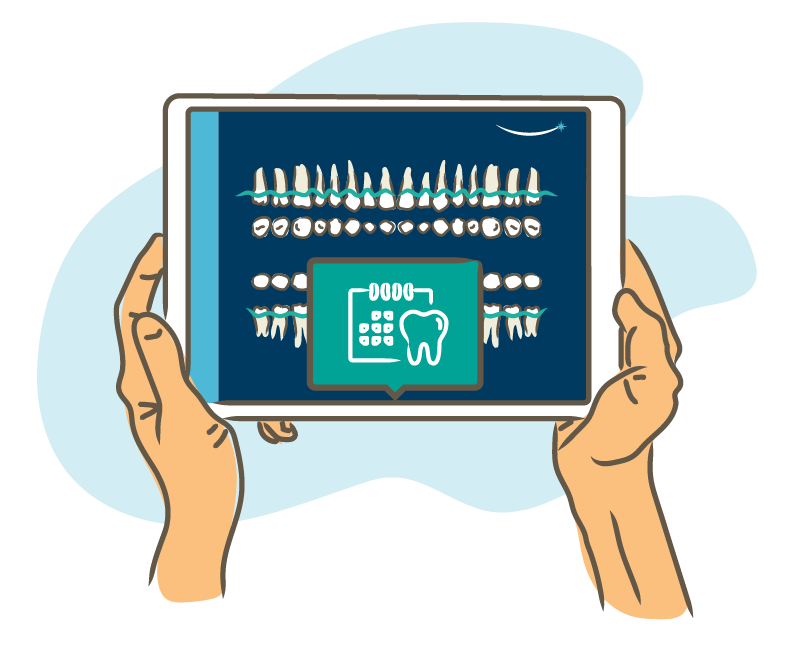Dental Innovations
Seeing Beyond the Surface: Advanced Dental Imaging and AI May Revolutionize Oral Health
Advanced dental imaging technologies aren’t just about taking better pictures, they represent a new way to unlock deeper levels of understanding and precision in oral health care. The grainy and sometimes uncomfortable X-rays we remember from childhood, requiring us to sit still with cardboard plates in our mouths while covered by a lead apron, were necessary first steps in an exploratory process of detection and diagnosis. Today, however, we’ve entered the digital era, where cone beam computed tomography (CBCT) scans and AI-powered analysis have introduced more sophisticated means of transforming dentistry with their ability to peer deep into the jawbone, reveal hidden structures, and predict future problems.
Advanced Dental Imaging with CBCT: a 3D Tour of Your Oral Landscape
Using cone-shaped X-ray beams, CBCT technology captures hundreds of images from different angles, piecing them together to create a high-resolution, virtual replica of your oral anatomy. Instead of the flat projection of traditional X-rays, CBCT creates a 3D model of a patient’s entire jaw structure, teeth, and surrounding tissues. Think of it like a detailed anatomical map of your mouth.
Unlike traditional X-rays, which can miss hidden issues behind teeth or within the jawbone, CBCT scans offer a panoramic view to enhance a dentist’s ability to detect problems and determine more effective treatment options.
- Identifying Hidden Dental Problems: From tiny cracks and abscesses to impacted wisdom teeth and bone infections, CBCT scans leave nothing to the imagination. They can detect early signs of decay, gum disease, and even potential tumors, allowing for early intervention and better treatment outcomes.
- Planning Procedures with Precision: Whether a dentist is placing dental implants, performing root canals, or correcting complex orthodontic issues, CBCT scans provide a comprehensive roadmap of the patient’s oral landscape. This detailed visualization allows for surgical precision while minimizing risks and maximizing success.
- Monitoring Treatment Progress: Tracking the healing process after surgery or orthodontic treatment is now easier using CBCT, as scans can show subtle changes in bone structure and tooth movement, helping dentists adjust treatment plans for optimal results.
By embracing advanced dental imaging tools, dentists are no longer restricted to the limitations of two-dimensional X-rays. They are now armed with the power to see deeper, diagnose earlier, and ultimately prevent potential problems before they arise. This translates to several immediate benefits.
- Improved Patient Outcomes: Early detection and targeted intervention lead to better treatment success rates and reduced risk of complications.
- Enhanced Patient Comfort: Minimizing invasive procedures and unnecessary treatments through proactive prevention leads to a more positive dental experience.
- Personalized Care: Tailored preventive strategies and treatment plans based on individual needs and vulnerabilities pave the way for truly personalized oral healthcare.
Uniting AI with Advanced Dental Imaging: Augmenting Human Expertise
The story doesn’t end with 3D renderings. Enter artificial intelligence. AI’s rapid and consistent evolution can bolster the advantages inherent in advanced dental imaging technologies such as CBCT. AI algorithms, trained on vast datasets of dental images and clinical information, can analyze scans with superhuman precision, highlighting potential issues and even suggesting treatment options.
Just as you may already use AI in everyday life as a personal assistant – such as asking Siri to schedule an event or ChatGPT to help plan a vacation – AI is emerging as a highly skilled dental assistant that can constantly review a patient’s oral CT scan to point out anything that might raise concerns. Here’s how it works.
- Automated Detection: Forget the tedious task of scrutinizing every pixel. AI can automatically pinpoint cavities, fractures, cysts, and other anomalies, saving dentists valuable time and reducing the risk of missed diagnoses.
- Predictive Insights: Beyond identifying problems, AI can assess the potential for future issues. By analyzing factors like bone density, tooth angulation, and existing wear and tear, AI can predict a patient’s risk for developing problems such as periodontal disease or jawbone fractures. This alerts dentists to implement preventive measures before issues arise.
- Personalized Treatment Planning: With a full understanding of a patient’s unique oral anatomy and potential risks, AI can help dentists recommend the most effective treatment options tailored to the patient’s specific needs. Imagine a world where braces are precisely positioned based on your bone structure or implants are placed with pinpoint accuracy – all thanks to AI-powered insights.
Real-World Benefits of CBCT and AI for Patients
Advanced dental imaging and AI no longer live in the realm of science fiction; these advances exist and are improving today. Consider some points illustrated in the academic study The “Dedicated” C.B.C.T. in Dentistry by Salvatore Distefano, Maria Grazia Cannarozzo, Gianrico Spagnuolo, Marco Brady Bucci, and Roberto Lo Giudice, published in the National Institutes of Health’s (NIH) National Library of Medicine, June 2023.
- CBCT can reduce the radiation dose by up to 87% compared to traditional scanners.
- Low-dose and ultra-low-dose CBCT. scanners can capture images in a matter of seconds or minutes, as opposed to several minutes or hours required by traditional scanners.
- CBCT scans can be shared easily and viewed by multiple practitioners, enabling more efficient communication and collaboration among specialists.
A similar 2023 study appearing in the NIH’s National Library of Medicine also explores the benefits of AI in dentistry, as explained in the article Smart Smile: Revolutionizing Dentistry With Artificial Intelligence by Ashwini Dhopte and Hiroj Bagde.
- AI algorithms can analyze dental radiographic images, such as panoramic radiographs and CBCT scans, to aid in the detection and diagnosis of various dental conditions. AI-powered image analysis can help identify and quantify dental caries (tooth decay), periodontal diseases, bone loss, and anatomical abnormalities.
- Automated image analysis can also assist in the detection of oral tumors, cysts, and other pathological conditions.
- AI can aid in treatment planning for dental implants by analyzing CBCT scans. AI algorithms can simulate implant placement and provide dentists with virtual treatment plans, optimizing the placement position and angulation for optimal outcomes.
- AI techniques, such as deep learning, can be employed to enhance the quality of dental radiographic images by reducing noise, enhancing contrast, and improving resolution. Improved image quality can lead to better visualization of dental structures, aiding in the interpretation and diagnosis of various dental conditions.
- AI models can aid in the diagnosis and classification of malocclusions by analyzing various diagnostic data, such as dental models, facial photographs, and radiographic images. By training on large datasets, AI algorithms can learn to identify and categorize different types of malocclusions, helping orthodontists in treatment planning and determining appropriate treatment modalities.
- By learning from large datasets, AI models can identify patterns and indicators of periodontal disease severity, enabling early detection and personalized treatment planning. AI-based software can automate periodontal charting by analyzing clinical data, such as probing depths, attachment levels, and bleeding scores, extracted from patient records.
- AI-powered software can assist in the detection and segmentation of root canals within radiographic images, helping endodontists accurately locate and analyze complex root canal systems.
Other research has shown that CBCT scans combined with AI analysis can deliver more optimal results than traditional processes.
- Reduce missed diagnoses by up to 30%.
- Improve the accuracy of implant placement by as much as 95%.
- Lead to earlier detection and intervention for periodontal disease, potentially preventing tooth loss.
- Optimize orthodontic treatment plans, reducing treatment times and minimizing complications.
But the benefits go beyond statistics for patients.
- Peace of Mind: Knowing that hidden problems are detected early and proactively addressed can instill a sense of security and confidence.
- Minimally Invasive Procedures: By pinpointing issues with precision, dentists can often perform less invasive procedures, reducing discomfort and recovery times.
- Personalized Care: With a deeper understanding of a patient’s oral health, dentists can create treatment plans tailored to their specific needs and risks, leading to better long-term outcomes.
The Future of Advanced Dental Imaging and Analysis in Dentistry
The integration of CBCT scans and AI is still in its early stages, but the potential is boundless. As the technology continues to evolve, more specific algorithms will not only detect problems but also predict long-term issues and suggest specific treatment methods.. The detailed insights gleaned from CBCT scans and AI analysis empower dentists to shift their focus from reactive treatment to proactive prevention. Imagine this:
- Predicting Cavities Before They Form: Instead of filling cavities once they begin causing pain, dentists can identify patients at high risk and recommend targeted preventive measures like fluoride treatments or dietary modifications, stopping cavities before they even start.
- Proactive Gum Disease Management: Early detection of gum disease through AI analysis allows for immediate intervention with personalized treatment plans, significantly reducing the risk of tooth loss and jawbone damage.
- Optimizing Orthodontic Treatment: CBCT scans provide crucial 3D data for orthodontists, enabling them to plan precise tooth movements and predict treatment outcomes with greater accuracy, leading to shorter treatment times and improved results.
Of course, even with the high-tech future becoming today’s reality at an accelerated pace, the first step in improving your oral health is to visit the dentist. If you’re an existing Blende Dental Group patient, schedule an appointment today. If you’d like to become a patient, sign up for a consultation.
Let's brighten
that smile
The when and where are up to you.




